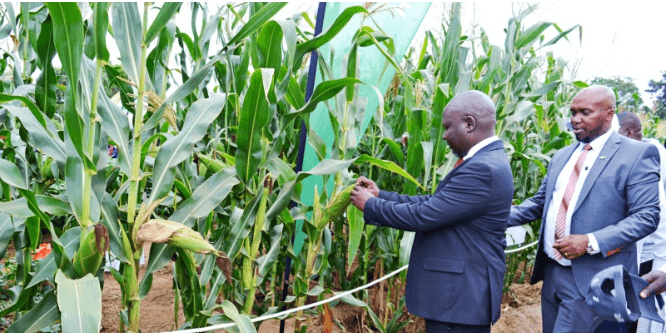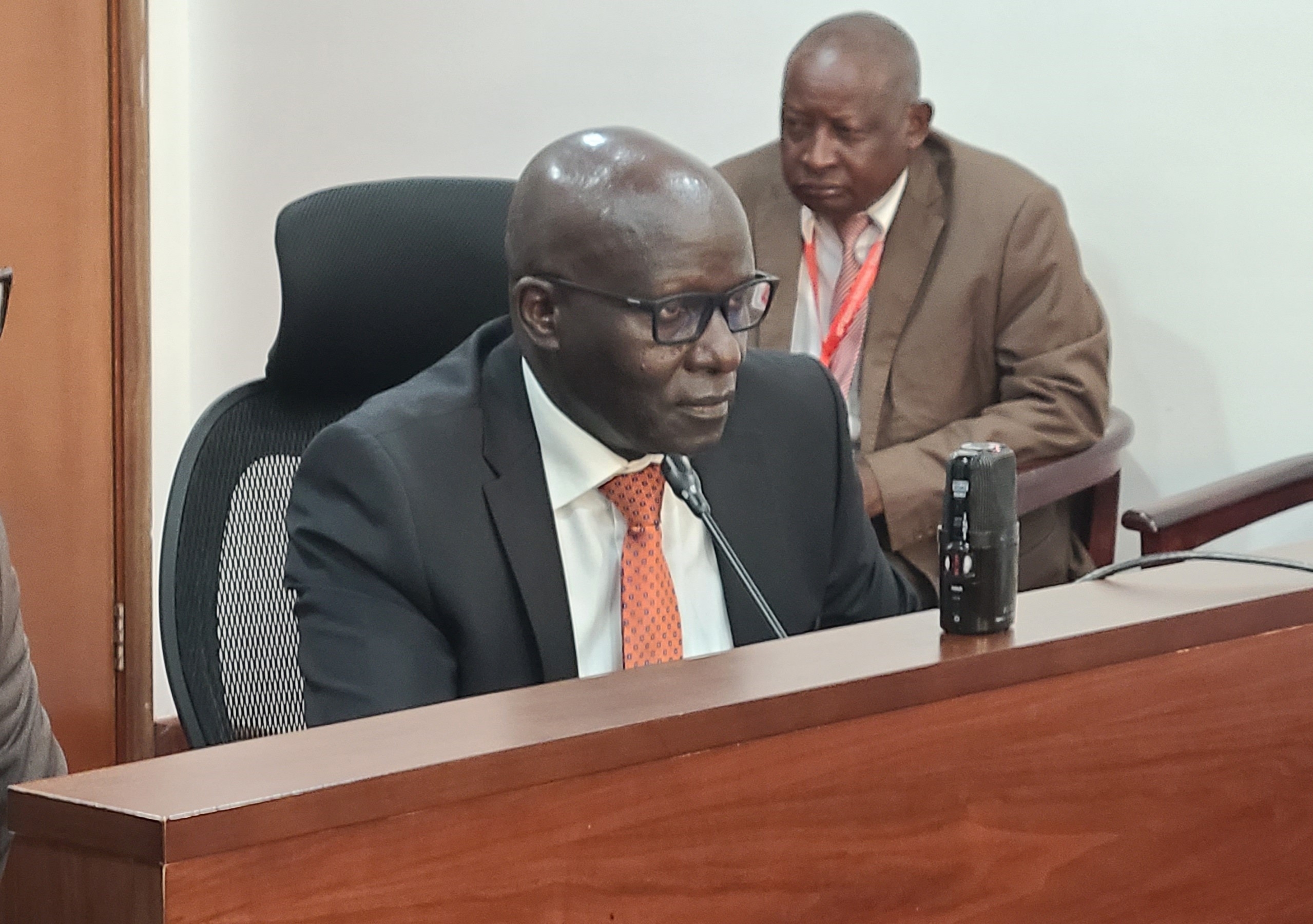

It’s one thing to read about mechanised farming in the United States, and quite another to stand in the middle of a 5,000-acre cornfield, watching a combine harvester that looks like a spaceship glide across the land.
My recent trip to Indiana, America’s quiet yet powerful agricultural powerhouse, was more than just a tour. It was a lesson, a surprise, a challenge and a reminder of how much potential farmers in Kenya and across Africa hold.
I travelled as part of a Kenyan delegation on a trade mission, eager to understand how mechanisation and biotechnology have reshaped farming in the United States.
What I found was not just machines and biotechnology but a mindset. The visit was organised by the National Association of State Departments of Agriculture (Nada), Indiana State Department of Agriculture and the US Department of Agriculture’s Foreign Agricultural Service in Nairobi.
Our first farm visit landed us at Lamb Farms, owned by Don Lamb, a first-generation farmer who also happens to be the Director of Agriculture in Indiana State.
Picture this, 10,000 acres of land, half planted with corn (called maize in Kenya), and half with soybeans. In Kenya, we would describe such a farm as a “company”, but Don speaks of it like it’s simply his family’s backyard.
Here, farming is precision. Tractors drive themselves with GPS. Drones monitor plant stress. Soil health is analysed digitally. Harvesting is timed to the last kernel. Information moves faster than the weather updates. And nothing is wasted, not seed, not fertiliser, not knowledge.
“Technology doesn’t replace the farmer,” Don told us as we walked the fields. “It just allows the farmer to do more and survive the markets.”
PRICE CONTROL
However, despite Indiana being incredibly advanced, farmers here are not in control of their crop prices. While in Kenya maize prices are set by the market, in their case, the prices are set by the Chicago Board of Trade.
“When global markets dip, farmers dip. When demand rises, so does hope. Right now, our production costs are high but crop prices are low,” Don said.
“Our biggest challenge is to survive the downturn. But agriculture is long-term. We stay because food will always be needed.”
He hailed Kenyan farmers as tough. “They work with little support yet still feed families and communities. If you combine that resilience with our technology, that’s a winning future.”
As we left Lamb Farms, Don told us, “Agriculture works when we learn from each other. It is never a one-way street.”
GMO DEBATE
Our next stop was Mckinney Farms, run by Tom McKinney, who manages about 4,500 acres of corn and soybeans also.
If anyone has lived the debate between genetically modified organisms (GMO) and non-genetically midwifed organisms (non-GMO) crops, it’s Tom.
According to the World Health Organisation, GMOs are plants, animals or microorganisms whose DNA or genes have been altered.
This is done to introduce desirable traits like pest resistance, improved nutritional content or disease resistance. GMOs are used in food production, scientific research and medicine to produce insulin.
Tom once grew non-GMO corn for a premium market supplying poultry feed companies. Then Covid-19 hit, prices rose, consumers shifted to cheaper products and the market evaporated, and he had to switch to GMO corn.
“Farming is business,” he said with the calmness of someone who has weathered many storms. “You grow what the market demands.”
GMO corn, he explained, simplified pest control. The corn borer, a moth larva that bores into the stalk and causes collapse, was a constant threat.
He says with GMO seeds, the protection was built-in, reducing insecticide use and improving yields.
“Even though GMO seeds cost more, the cost of protecting non-GMO crops was higher. GMO made economic and environmental sense.”
They also produce non-GMO soybeans, but only because there is a guaranteed premium price.
Meanwhile in Kenya, the Court of Appeal ruling on the GMO case has reignited Kenya’s long-running debate over the safety, environmental and economic implications of GMOs in the country’s food system.
On March 7, the Court of Appeal temporarily halted the government from taking any further steps to permit the importation of GMO crops and foods into Kenya.
The ruling came after the Kenya Peasants League and the Biodiversity and Biosafety Association of Kenya, alongside 18 other civil society organisations, challenged the government’s 2022 decision to lift a decade-old ban on GMOs.
The groups argued that the government’s move lacked proper public participation and posed potential risks to food safety, biodiversity and farmers’ seed sovereignty.
The 2022 decision to lift the ban had been largely driven by pressure from the animal feed industry.
Feed millers under the Association of Kenya Feed Manufacturers had appealed to the government to allow importation of GMO and non-GMO soya bean meal and yellow maize to address severe shortages and soaring prices of animal feed.
They argued that the GMO restrictions had limited access to affordable feed raw materials, forcing them to rely on expensive imports from traditional non-GMO suppliers, such as Zambia, Tanzania, Malawi and Uganda.
Major producers of GMO crops, such as Brazil, Argentina and the United States, were identified as alternative suppliers that could help ease feed shortages and stabilise prices in Kenya’s livestock sector.
A 2025 study by the African Agricultural Technology Foundation estimated that delays caused by Kenya’s 2012–22 GMO ban cost the country about $157 million (Sh20 billion) in lost potential earnings, underscoring the economic stakes of the policy debate.
DAIRY MARVEL
From the corn and soybean farmers, we had an opportunity to visit a diary farmer.
The Hulb Bosch Dairy Farm is a dairy farm like no other. It house 8,000 cows but is so calm, you can hardly tell they are there.
You don’t hear Hulb Bosch Dairy Farm before you see it. There is no loud mooing, no frantic movement, no scattered feed, just an almost unreal calmness.
The only sign that this is one of the largest dairy farms in Indiana is the large, stainless steel milk tankers parked outside.
The farm milks 6,600 cows three times a day, producing milk that reaches grocery shelves in under 48 hours. The operation is clean, controlled and deeply invested in animal welfare.
The milking is done using machines. The milk passes through pipes into a cooler, which is then transferred to coolers in trucks for transportation to the relevant supermarket outlets in Indiana.
Wim Hulbosch is a first-generation dairy farmer after his family moved from Belgium to the US at 14, when his parents sold their farm and took a leap of faith across the Atlantic.
Today, his family runs an operation with 80 employees, advanced veterinary care and a commitment to “happy cows”.
“Healthy cows give good milk. We work with nutritionists, vets and comfort specialists. Stress is the enemy,” Wim said as we watched cows line up calmly for milking, almost like a well-rehearsed routine.
“Milk is a promise. From cow to table, everything must be safe, fresh and fast.”
I thought of small dairy farmers back home battling feed prices, disease, lack of cooling and unreliable markets.
And yet, with support, organisation and investment, their potential is limitless.
Standing in these fields, barns and dairy parlours, two truths became clear.
One is that mechanisation isn’t luxury, it’s survival as it reduces labour burden, increases efficiency and allows for scale.
The other thing is that biotechnology is not the enemy. When managed responsibly, it increases yields, reduces pesticide use and improves food security.
The innovation, resilience and problem-solving mentality already exist among Kenya farmers.
What’s missing is a reliable system: access, credit, extension services and policy support.
Farmers and policymakers in Kenya need to step up to the challenge.
















